The night bus from Tokyo to Tohoku is around 7 to 8 hours. I woke up an hour before arrival time and peered out of the window expecting to see debris and destruction, images of the tsunami coming to mind, but instead we were driving through the mountains passing quaint Japanese-style houses. This, I later learned, was the main road to Rikuzentakata, one of the areas worst hit by the March 11th quake and tsunami.
Fellow volunteer Sawako came to meet me at the bus stop around 7am. We drove back to our accommodation discussing the different tasks we had to do over the next few days. Sawako then explained how traumatised some of the fishermen were. “Sitting with them for 5 mins, even just listening, will help a lot” she said. Her words made an impact, and gave me the motivation to get stuck in.
From Nov 2nd to 4th I volunteered in Tohoku with Sanriku Volunteer Divers, a group from across Japan who are coming together to help the local abalone fishermen, mainly pulling debris from underwater. As the March earthquake had caused such a devastating tsunami, I set about researching what I could do as a diver when one day, a random online search took me to Sanriku Volunteer Divers.
The group was established by Hiroshi Sato, nicknamed Kuma-san or “Teddy Bear.” On March 11th he was working as a dive guide in Thailand and went straight home when the earthquake struck. He began helping in the affected areas when a fisherman suggested that as a diver, perhaps he could help pull out the debris that had been washed out to sea. And so began a massive underwater cleanup. As word spread, more and more divers began to join in, and Sanriku Volunteer Divers was born.
When I emailed the group I offered to dive, but was told it was best left up to the more advanced. As I discovered, it certainly wasn’t fun diving. Divers are often underwater alone and must be 100 percent comfortable with equipment and any potentially dangerous situations such as getting tangled up in the ropes or stuck among the debris. They tend to work at around 6-10m and constantly ascend to help lift the rubble or explain to those on land that a particular item could be tricky and require specialised removal equipment. Therefore good ear-clearing skills are a must.
Our daily routine went something like this: quick breakfast and departing around 8AM. The areas we were assigned to were about an hour from where we were staying, so we arrived just after 9AM and began preparing the ropes, untangling them and fixing a lead weight to each one while the divers set up their equipment. Mornings and afternoons were spent pulling out as much stuff as we could find, after which we were rewarded with a quick soak in the local hot spring before heading back for the evening. My role was to stay on land and help pull out the rubble. The biggest pieces such as tree trunks were removed using cranes on the fishermen’s boat. A light truck was often used to pull other objects while each volunteer on land including myself was paired up with a diver. The diver would descend, while I threw the rope out and waited for the signal. Two tugs later and I would be pulling out fishing nets, fishing equipment, tree branches, poles, plastic bags or trays. The sea was also littered with buoys marking the spots where more heavy objects had been found. These were then lifted out with the arrival of the fishermen’s boat and crane. From a distance, the areas we worked in seemed fine. The sea was calm, visibility was pretty good and compared to immediately after the quake, a lot of debris at the ports had gone. But as we found more and more objects at each attempt, including plastic and broken bottles, carpets, car tires and wood, it became obvious that a lot still needs to be done. The saddest moment of all was finding a woman’s handbag and a snowboard.
The nearest big area to our accommodation was Rikuzentakata, which we drove through each day on our way to the ports. What used to be a populated coastal town had been swept away with nothing left except piles of crushed cars, debris and buildings reduced to steel structures. The cleanup operation has been huge and impressive, much of the rubble has now gone, but there really was nothing, nothing to describe what I saw and how I felt. I seemed tiny, standing in the middle of such open flat land. My pictures give no idea of the impact and scale of the disaster. You really need to be there to feel it. The town’s trees were all uprooted and washed away, except for one single pine tree now known as the Miracle Pine Tree. Having survived the tsunami, it is now a symbol of hope for Rikuzentakata.
That feeling of hope remains amidst the debris and air of tragedy that hangs over Tohoku. Life goes on, and Kuma-san really wanted us to understand that there is more to the area and that we can enjoy ourselves in Tohoku too. During my stay I was taken for a drive through the mountains to see the most beautiful autumn leaves, and later we got to see the “salmon swim,” hundreds of salmon returning and running upstream from one of the bays. This is said to be one of the area’s highlights, and I marvelled at the hundreds of fish desperately fighting to make it upstream in the crystal clear water. We stayed in a house that once belonged to Kuma-san’s grandmother in law. Now a base for volunteers, it was warm and homely with bedding, communal area, kitchen and space for diving gear, all for a reasonable 2,000yen a night. There was plenty of room for around 10 of us, and I became chef for two nights, cooking spaghetti bolognese, curry and salad for 9 hungry divers. Remembering Sawako’s words, I spent time with the fishermen too. I met one who simply can’t watch any tsunami footage, and another who was out at sea 10mins from land when the water suddenly started moving violently and he knew that something was seriously wrong. The group are small and not well known, yet I have been deeply moved by how determined the members are to help, how passionate they are about diving and the ocean, and how important it is to enjoy the volunteering despite the huge tragedy. My time in Tohoku was not one for tears. It was a chance to do my bit to help, form new friendships, have fun and see for myself the damage left behind and what needs doing now and in the future. What I learned most of all and what really hit home is that every tiny little thing I did, including making my mum’s special salad dressing and mixing it into a huge bowl of salad, really did count.
Click here to read more about Kuma-san and the group:
http://www.livinggreenmag.com/august_2011/community.html

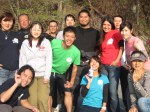



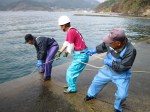

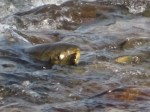

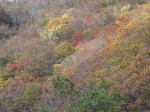
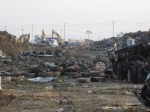

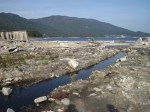
Pingback: Disaster-Hit Areas: How Diving Can Help | DiveYeti
Pingback: Volunteer Divers after Japan's 2011 Tsunami - DIVE.in
Pingback: Volunteer Divers Help with Underwater Recovery in Tohoku : Savvy Tokyo